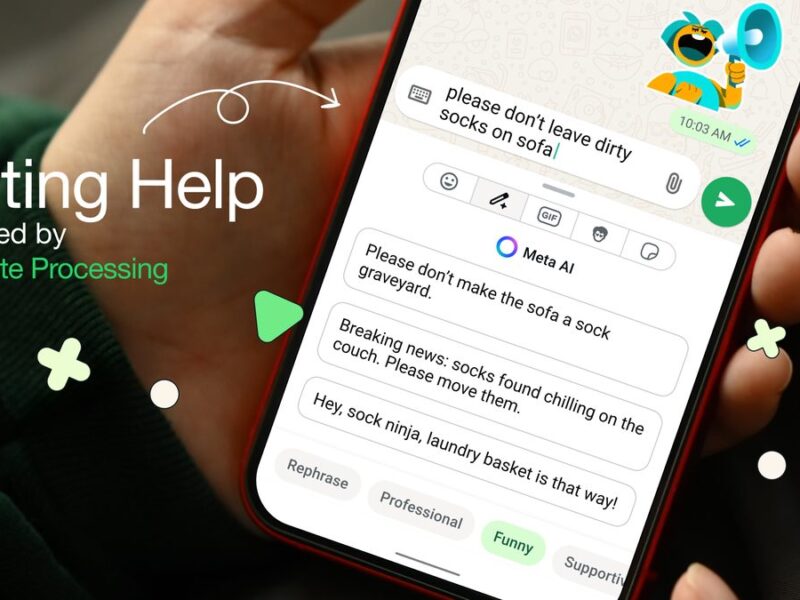that 99% of the global population breathes air that exceeds WHO annual limits[1], causing $6 trillion in global yearly health costs as per the World Bank[2], with 9 out of 10 deaths attributed to outdoor air pollution in low- and middle-income countries[3]. The current air quality research and monitoring approach faces issues with proprietary models, closed datasets, and inaccessible research outputs. The massive scale of this socio-economic challenge underpins the need for collaborative, scalable, and equitable solutions to tackle air pollution, which has never been more urgent.
The principle of Open Source can be a solution. Instead of keeping critical information on air quality data and methods locked behind paywalls, with restrictive access to proprietary algorithms and tools, siloed air quality databases, an open approach is transforming how we research, understand, and act on the air quality[4]. This methodology not only makes the process more inclusive but also makes it more adaptable and transparent. With this objective, we explore the value of open approaches in air quality science, why they are crucial for equity and innovation, and how they are already transforming how we understand and respond to environmental threats.
We at UNICEF Lao PDR Country Office[5] have collaborated with UNICEF East Asia Pacific’s Frontier Data Lab, UNICEF Office of Innovation[6], and AQAI[7] to showcase the role of open-source technologies in air quality monitoring.
Here, we are launching a multi-part blog series to understand the world and value of open approaches in air quality science. We start with how open-source data and tools are used in air quality monitoring. Later in the series, we will do a deep dive into open-source modelling and share the experience of how such systems can help ensure environmental justice.
On the technical side, we delve into the world of open source, open data and, open methods and provide a slice of how they are used in real-world use cases for leading humanitarian organisations, especially UNICEF, the United Nations agency for children, working to protect the rights of every child, especially the most disadvantaged and those hardest to reach[8].
Open source, open methods, and open data are three interconnected pillars of openness in research and technology:
- Open Data: It refers to data that is freely available, accessible, and reusable by anyone. This method allows researchers, policymakers, and communities to build on the same evidence base.
- Open Methods: The processes, algorithms, and workflows used to analyse or interpret that data are transparent and shareable, so others can understand, replicate, and improve them.
- Open Source: The software or tools implementing these methods are released under open licenses, enabling anyone to inspect, use, modify, and redistribute them.
So, how are they related?
Open data provides the raw material, open methods define how that material is processed, and open source ensures the tools that carry out those methods are accessible and adaptable. Together, they create a transparent, reproducible, and collaborative ecosystem for knowledge creation.
The Case for Openness in Air Quality Science
1. Open Data: Breaking Barriers to Access
Access to high-quality air pollution data is the foundation for research, public engagement, and evidence-based policymaking. Yet, in many regions, especially across the Global South, real-time or historical data is unavailable, locked behind paywalls, or shared only through cumbersome bureaucratic channels.
Image Courtesy: OpenAQ.org
Open data democratizes access. Initiatives like OpenAQ aggregate air quality data from over 100+ countries, making millions of data points freely available through APIs[9]. Several satellite datasets, such as from NASA (e.g., MODIS, VIIRS), ESA’s Sentinel missions, and India’s NCAP portal, also provide open or semi-open access to observing aerosol and particulate matter. Data repositories like Google Earth Engine and Mozilla’s Environmental Data Commons enable large-scale petabyte-scale geospatial data analyses without requiring licensing costs for non-commercial use. Furthermore, open data portals (with open APIs) such as OPenDAP[10] and STAC[11] do not need third-party licenses and locking arrangements like in the case of Google Earth Engine. With the satellite and ground-level datasets that are open and available, the main barrier is the standardisation of these datasets and data points. Clearer metadata, time resolution, and units are needed to ensure platform interoperability. Even then, initiatives like OpenAQ would not be possible without the support of countries willing to make it public.
2. Open Source: Tools that Scale Across Contexts
Open source provides an alternative and an opportunity to build air quality forecasting tools, visualisation platforms, or even basic analytics pipelines, which are usually difficult for smaller institutions or local governments to afford.
UNICEF Laos PDR and Frontier Data Lab have made significant strides in estimating air quality using an open-source machine learning model[12] in the East Asia Pacific Region of Lao PDR. This work is the initial step towards creating a scalable, global solution for air quality estimation, aligning with the Global Digital Compact and the UN’s commitment to leveraging technology and AI to advance the Sustainable Development Goals.
AQAI, for instance, contributes to the open-source ecosystem by developing a modular data loader pipeline that integrates satellite and ground sensors into AI models. UNICEF’s Office of Innovation has supported this initiative at AQAI.
A global repository of air quality models, adapted to various geographies, is crucial for improving environmental monitoring. This shared resource, explicitly meant for climate and pollution models, can be hosted in a platform like Hugging Face, which can make it more accessible to a larger community and significantly lower barriers for countries lacking in-house AI expertise or infrastructure. Such a repository would empower local researchers, public health officials, and environmental agencies by offering access to pre-trained models, documentation, and standardized tools. This mechanism would enable them to deploy advanced AI solutions without extensive computational resources or highly specialised technical teams. This democratisation of AI would accelerate data-driven decision-making in low-resource settings, foster global collaboration, and ensure all countries, regardless of their resources, can benefit from the latest advancements in environmental monitoring, public health, and sustainable development.
3. Open Methods: Building Trust Through Transparency
Reproducibility is a core part of scientific progress. Air quality research is essential because the results often influence public health and city planning. That is why open methods matter—sharing the code, data, assumptions, and steps behind a study helps others check the results and build on the work. Open methods are even more important when using AI or machine learning, which can be hard to understand if the process is not fully explained. Some groups already do this well. For example, GEOS-Chem[13] is a globally recognised three-dimensional atmospheric chemistry model that uses meteorological data from NASA’s Goddard Earth Observing System (GEOS), managed by the Global Modelling and Assimilation Office. Widely used by hundreds of research groups worldwide, the model supports a broad spectrum of studies on atmospheric composition. Its design includes regional refinement and parallel computing capabilities, allowing for efficient, high-resolution simulations.
As a community-driven, open-access model, GEOS-Chem is maintained collectively by its users, who are encouraged to engage with its development and adhere to responsibilities outlined on the new user welcome page. Prospective users are invited to consult the model’s comprehensive documentation and support resources before getting started.
Despite recent advances, many AI-based models continue functioning as “black boxes,” with few studies openly sharing key details such as hyperparameters, training code, or data preprocessing steps. Journals and funding agencies can be crucial in improving transparency by enforcing stronger requirements for open and reproducible methods.
Open Approaches Enable Faster, More Equitable Responses
Openness is not just about principles; it is about practical outcomes.
Rapid Crisis Response: When wildfires swept across the state of California in the United States[14] and across Australia[15], the open satellite data enabled real-time air quality maps to be disseminated widely, which warned millions of residents. In LMICs, where air sensors are sparse, open remote sensing data-based models often provide the only viable solution for alerts[16].
Community Empowerment: Citizen science initiatives from Delhi to Ulaanbaatar[17] are increasingly adopting open-source tools to create their air quality maps. Organisations like Air Gradient and OpenAQ run community programs, like the Clean Air Advocates and the Community Ambassadors Program, to increase collective action by the community. Through Air Gradient’s program, individuals are trained with practical approaches to improve air quality and reduce emissions. OpenAQ‘s program also trains air quality advocates to utilize air quality monitoring data to support the community in fighting air pollution.
Health Research at Scale: Epidemiologists studying the long-term health impacts of air pollution can leverage a growing ecosystem of open-source tools and freely available datasets.
Challenges and the Road Ahead
While openness has delivered significant gains, a few challenges remain:
- Data Quality and Completeness: Open doesn’t always mean reliable. Standardising calibration protocols and creating validation frameworks for low-cost sensors is still a work in progress. Moreover, convincing government data owners to opt for open-sourcing their data is not yet streamlined. Many countries still do not make it public.
- Licensing Ambiguities: Many “open” datasets have vague or restrictive licenses that deter reuse. Harmonising licensing (e.g., adopting Creative Commons or Open Data Commons standards) would enable collaboration.
- Sustainability of Open Initiatives: Many open-source projects rely on short-term grants or volunteer labour. Long-term funding mechanisms and public-private partnerships are needed to sustain this ecosystem.
Current Work and Promising Initiatives
Many promising efforts are addressing these gaps:
- 🌍 The Clean Air Fund and OpenAQ[18] are working together to build country-level open air quality ecosystems, especially in Africa and Asia.
- 🤝 UNICEF Office of innovation, Venture Fund supports startups like AQAI[19], and UNICEF teams such as Frontier Data Lab, UNICEF Lao PDR Country Offices, which are building open-source GeoAI tools for air pollution estimation using remote sensing and AI.
- 🧑🤝🧑 Open Environmental Data Coalitions like Open Climate[20] are bringing together stakeholders to co-create standards and repositories.
Call For Action: Openness as a Public Good
Exciting work is being developed with UNICEF East Asia Pacific’s Frontier Data Lab and the Lao PDR Country Office. A shoutout to academic partners like the National University of Laos as we co-develop the next stage.
Air for Tomorrow: We must realise air pollution is a global crisis, but its solutions must be local, inclusive, and adaptive. Embracing open data, open source, and open methods accelerates innovation and ensures no one is left behind in the fight for clean air.
If the future of environmental health is to be just, resilient, and data-driven, it must also be radically open.
“We all breathe.”
Stay tuned for our upcoming articles on the air quality digital landscape, where we explore the state of the art in Open-Source Air Quality Monitoring.
Find out more about our work here.
Acknowledgement: This work is supported by the partnership between ARM and UNICEF Office of Innovation to develop impactful AI solutions that address challenges affecting the lives of children and their communities.
Contributors: Prithviraj Pramanik, AQAI; Hugo Ruiz Verastegui, Anthony Mockler, Judith Hanan, Frontier Data Lab, Risdianto Irawan, UNICEF EAPRO; Soheib Abdalla, Andrew Dunbrack, UNICEF Lao PDR Country Office; Halim Jun, Daniel Alvarez, Shane O’Connor, UNICEF Office of Innovation;
[1] https://www.who.int/health-topics/air-pollution#tab=tab_1, Accessed: 21st July 2025
[2] https://documents.worldbank.org/en/publication/documents-reports/documentdetail/099032625132535486, Last Accessed: 18th August 2025
[3] https://cdn.who.int/media/docs/default-source/air-pollution-documents/air-quality-and-health/aap_bod_results_may2018_final.pdf, Last Accessed: 18th August 2025
[4] https://www.unicef.org/eap/protecting-children-air-pollution-open-source-air-quality-machine-learning-se-asia, Last Accessed: 18th August 2025
[5] https://www.unicef.org/laos/stories/real-time-air-monitoring-launches-schools, Last Accessed: 21st August 2025
[6] https://www.unicef.org/innovation/, Last Accessed: 21st August 2025
[7] https://www.aqai.xyz/, Last Accessed: 21st August 2025
[8] https://www.unicef.org/what-we-do#:~:text=Across%20more%20than%20190%20countries,sanitation%20to%20those%20in%20need., Last Accessed: 21st August 2025
[9] https://www.redhat.com/en/topics/api/what-are-application-programming-interfaces, Last Accessed: 21st August 2025
[10] https://www.opendap.org/, Last Accessed: 21st August 2025
[11] https://stacspec.org/en, Last Accessed: 21st August 2025
[12] https://www.unicef.org/eap/protecting-children-air-pollution-open-source-air-quality-machine-learning-se-asia, Last Accessed: 21st August 2025
[13] https://geoschem.github.io/overview.html, Last Accessed: 21st July 2025
[14] https://www.nesdis.noaa.gov/news/noaa-satellites-monitor-raging-wildfires-california, Last Accessed: 21st August 2025
[15] https://www.usgs.gov/media/before-after/satellite-imagery-shows-stunning-spread-australian-fires, Last Accessed: 21st August 2025
[16] https://www.unicef.org/eap/protecting-children-air-pollution-open-source-air-quality-machine-learning-se-asia, Last Accessed: 21st August 2025
[17] https://www.breathemongolia.org/en, Last Accessed: 21st August 2025
[18] https://www.cleanairfund.org/news-item/advancing-clean-air-in-africa/, Last Accessed: 21st July 2025
[19] https://www.aqai.xyz/, Last Accessed: 21st August 2025
[20] https://openclimate.network, Last Accessed: 21st August 2025

